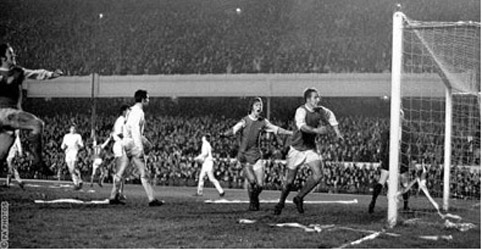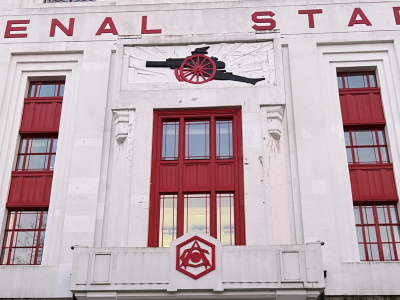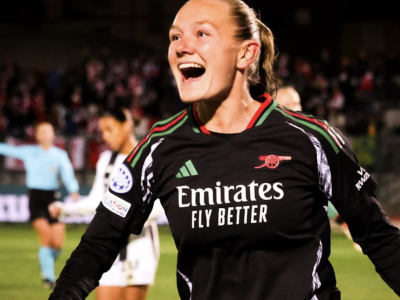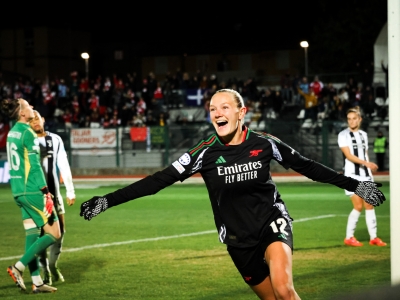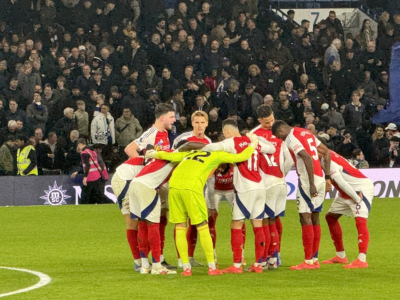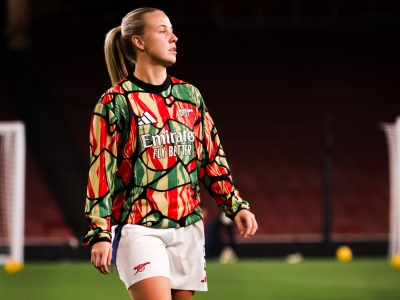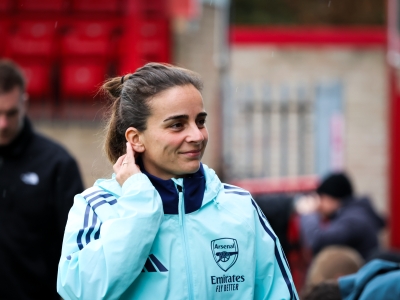As Arsenal started their pre-season fixtures for 1969/70, there are few months in human history that had seen such optimism and joy as July 1969 (the summer of 1969 which Bryan Adams would eulogise in song fifteen years later). On the first Saturday of the month, the Rolling Stones pulled off a free gig in London’s Hyde Park in front of a crowd estimated at half a million people (events here covered by Granada’s ‘World in Action’). However, it sadly occurred just forty eight hours after the death by misadventure of former Stones guitarist Brian Jones
By the summer of 1969, Arsenal’s trophy-less run had now extended to sixteen years. The Gunners had finished in fourth place in 1968/69 and reached two back to back League Cup Finals, however the last an embarrassing 1-3 defeat to third tier Swindon. Keeper Bob Wilson however felt that the seeds of future success lay in that defeat. Wilson stated: ‘I truly believe that the rise of the Double side stemmed from that afternoon at Wembley. We came home to headlines about the ‘shame of Arsenal’, and a lot of us were determined that it would never happen again. We craved success with even more intensity because of it’.
Arsenal’s pre-season started again with the behind closed doors friendly with Watford (now promoted to the second tier) at the Gunners’ London Colney training ground. Arsenal ran out 2-1 winners. Five days later, history was made as man landed on the moon. On British TV, events were covered into the night with the BBC’s coverage hosted by the ‘Sky at Night’ host Patrick Moore, while ITV’s was a more light entertainment affair hosted by David Frost with guests such as Cliff Richard and Lulu. One week later, Arsenal headed for a pre-season tour in West Germany, the first game was against Borussia Dortmund.
Arsenal took a two goal first half lead with goals from Bobby Gould and John Radford. In the second half, the West German side pegged Arsenal back to a 2-2 draw. Four days later, Arsenal met Kaiserslautern. In front of 15,000 spectators, again the match ended in a 2-2 draw with goals for John Radford and a young Charlie George now promoted the first team squad. The last Saturday before the start of the season had seen a visit from Swindon Town to Highbury, in a replay of the League Cup final five months prior. A crowd of 21,498 turned out for the game. Arsenal won 3-0, with goals from Jimmy Robertson, Bobby Gould and John Radford.
In popular opinion, fault for the League Cup loss back in March fell on the shoulders of centre half Ian Ure, after his mix up with Bob Wilson led to Don Smart’s opener for Swindon. Six weeks later at Highbury, Ure committed a further error in a 1-2 home defeat to Leeds United which was caught by the TV cameras. On the eve of the opening day of the season, new Man United manager Wilf McGuiness – taking over from the retiring Matt Busby – had forwarded a bid for the Scottish defender. Having lost his first team place to Peter Simpson, his move would be complete within a fortnight.
Over the summer, Arsenal had ditched their blue and white hoop socks – a feature since the days of Herbert Chapman – for red socks. The Gunners also signed Geoff Barnett as reserve keeper from the side that they would go on to face on the opening day of the season – Everton. The game would be covered by LWT’s ‘The Big Match’. Making his league debut that day at Highbury would be eighteen year old ‘skinhead’ Charlie George. In front of a crowd of 44,364, Arsenal suffered a 0-1 defeat resulting from a goal from Everton’s John Hurst. Four days later, it was Arsenal’s turn to visit Elland Road. The Gunners bagged their first point with a 0-0 draw, however were yet to score their first goal of the season.
That was to come the following Saturday at the Hawthorns, when Charlie George bagged his first ever goal for Arsenal in a 1-0 win over West Brom. The game featured on the BBC’s ‘Match of the Day’, though footage of which sadly doesn’t feature on any of the internet’s video sharing websites. The Gunners however found themselves trailing the two Merseyside clubs who picked up maximum points from their opening three games. The week that proceeded that game saw Northern Ireland erupt into sectarian rioting. Meanwhile, on the other side of the Atlantic, over that very same weekend would be the Woodstock Festival in New York state, where over 400,000 people saw the like of Jimi Hendrix, the Who and Sly and the Family Stone perform.
Three days later, Arsenal were to meet Leeds United again at Highbury. This match would be Ian Ure’s final appearance for the Gunners. Arsenal bagged a 1-1 draw with a goal from Pat Rice. By the following Saturday, Nottingham Forest visited Highbury. The Gunners bagged their first home win of the season as goals for George Graham and Bob McNab gave Arsenal a 2-1 victory. Forty eight hours later on August Bank Holiday Monday, the Gunners headed to the Boleyn Ground to meet West Ham. In this post-Enoch Powell Rivers of Blood speech era, Alf Garnett’s favourite football side gave a debut to Bermudan forward Clyde Best, being as they were pioneers with regard to Afro-Caribbean football stars under Ron Greenwood.
An own goal from Frank Lampard senior gave Arsenal a first half lead, however a second half goal from Roger Cross had earned the Hammers a 1-1 draw. The following Saturday, the Gunners headed to St. James’s Park to face Newcastle United, which would be captured by the BBC’s ‘Match of the Day’. Former Spurs winger Jimmy Robertson gave Arsenal the lead, however goals for Alan Foggon, Bryan ‘Pop’ Robson and Wyn Davies inflicted a 1-3 defeat on the Gunners. Arsenal ended the month in tenth place, six points behind leaders Everton. The opening fixture for September 1969 was a League Cup second round tie with Southampton at the Dell in which John Roberts made his debut. Goals for Arsenal’s Bob McNab and Southampton’s Mick Channon meant a 1-1 draw.
Forty eight hours on back at Highbury, Arsenal’s bid for a hat-trick of League Cup finals was boosted by a 2-0 win over the Saints secured by two goals for George Graham in extra time. After that Thursday night fixture, Arsenal met Sheffield Wednesday at Highbury again on Saturday though played out a 0-0 draw, the only thing of note about this fixture is that eighteen year old Scot Eddie Kelly made his debut as a substitute for David Court. Three days on, again at Highbury would be the opening fixture of Arsenal’s quest for the Euro glory in the Inter Cities Fairs Cup, which they had qualified for the first time since 1963/64.
The Gunners were drawn against Northern Irish side Glentoran and ironically, young Ulsterman Sammy Nelson made his Arsenal debut coming on as sub for left back Bob McNab. Goals for Bobby Gould and two for George Graham meant a 3-0 win for Arsenal. Back in the League four days later, Arsenal faced fourteenth placed Burnley at Turf Moor - the Clarets having drawn their last four league games. A George Graham goal gave Arsenal a 1-0 win, which gave the Gunners a boost ahead of Tottenham’s visit to Highbury the following Tuesday. Making his Arsenal debut would be eighteen year old keeper Malcolm Webster, due to an injury to regular keeper Bob Wilson.
Despite goals for John Radford and former Spur Jimmy Robertson against his old club, Tottenham sealed a 2-3 defeat for Arsenal with a winner from John Pratt after goals for Martin Chivers and Alan Gilzean. In describing his goal, Pratt states: ‘I made about four tackles outside the box before running on and side-footing past Malcolm Webster’. Arsenal now lay ninth, but performing worse were Man United in fifteenth place, having won just two games from nine. Four days on at Highbury, London Weekend’s ‘The Big Match’ captured Man United’s visit to Highbury in front of 59,498.
Goals for George Graham and a brilliant thirty yard strike from Jon Sammels gave Arsenal a two goal lead. Man United pulled one back after keeper Malcolm Webster dropped a George Best shot which rolled into the net. Into the second half, Man United grabbed an equaliser with a goal from David Sadler with the match ending in a 2-2 draw. Four days on, table topping Everton head to Highbury to face Arsenal in the third round of the League Cup. The two sides play out a 0-0 draw. For the closing League fixture of September 1969, Arsenal headed across town to meet thirteenth place Chelsea, whom Arsenal had only beaten once in the previous twelve meetings.
Goals for former Arsenal star Tommy Baldwin and two for Alan Birchenall meant a 0-3 loss for the Gunners, which left them in thirteenth position and now ten points behind league leaders Everton. According to this ITN footage, there had also been examples of post-match hooliganism with Arsenal fans at the Bridge. Arsenal then went on to play two games in twenty four hours during the midweek. Forty eight hours on from Stamford Bridge saw a trip to Belfast to play the second leg of their Inter City Fairs Cup tie with Glentoran. Coming on as sub would be eighteen year old Ray Kennedy to make his Arsenal debut.
Malcom Webster conceded a penalty in the opening minute, from which Glentoran took the lead. Charlie George, playing his debut in European competition, received his marching orders for swearing at a linesman which led to him briefly losing his place in the Arsenal line up as punishment from disciplinarian boss Bertie Mee. Arsenal crashed to a 0-1 defeat, but progressed to the next round with a 3-1 victory on aggregate. The following day, Arsenal crossed the Irish Sea to play Everton in their League Cup replay. A Howard Kendall goal denied Arsenal a third successive final, as Everton inflicted a 0-1 defeat on the Gunners. The following Saturday, Arsenal rounded off a bad week with a 0-1 home defeat to Coventry City courtesy of an Ernie Hunt goal, in which former Everton keeper Geoff Barnett made his debut.
By this point Arsenal had now failed to win their last seven matches – a run which included four straight defeats in all competitions. The Gunners winless streak would actually stretch to twelve games, though the next five games would be five straight draws. The first would be a 1-1 draw with West Brom on a Tuesday evening, with a goal from John Radford. This would be followed by a goal-less draw with Stoke at the Victoria Ground the following Saturday. One week on, Arsenal visited Roker Park to face a Sunderland side anchored to the bottom of the table. The match would be covered by Tyne Tees’s regional highlights show ‘Shoot’.
Dennis Tueart gave Sunderland the lead, however Arsenal were spared defeat by an equaliser from Jon Sammels which earned the Gunners a 1-1 draw. Arsenal’s final league fixture of October 1969 saw the visit of an Ipswich Town side one point off of the bottom of the table having won just three of their fifteen games played. The two sides played out a 0-0 draw. After six weeks of failing to win a league fixture, the Gunners had sunk to fourteenth place and four points from the relegation zone. Their final fixture of the month would be a visit to Sporting Lisbon in the Inter Cities Fairs Cup, which too ended in a scoreless draw. Going into November, Arsenal would make their first ever league visit to Selhurst Park to play newly promoted Crystal Palace.
The South East London side stood in eighteenth place and two points from the foot of the table, having also had a poor run of form, failing to win their last eight games with just two victories from their sixteen games played. After twelve games without a win, Arsenal finally grabbed two points with a 5-1 hammering of Palace, with goals for George Armstrong, George Graham and a hat-trick for John Radford. Highlights of the game would be captured by LWT’s ‘The Big Match’ and also has the honour of being the first time an Arsenal game was televised in colour. Exactly one week later, Arsenal were to face another newly promoted side in the shape of Brian Clough’s Derby County, who had made a better start to the season, standing fourth in the table. This match too would be captured by the TV cameras, featuring on LWT’s ‘The Big Match’.
The Gunners took their goal tally to nine goals in two games. On target would be George Armstrong, Charlie George who returned to first team action as a sub for Terry Neill and two goals for Jon Sammels in a 4-0 win. The Gunners climbed up to eleventh, however their new found form would be disrupted on visiting sixth place Wolves one week later as the Gunners crashed to a 0-2 defeat at Molineux. Arsenal’s penultimate fixture of November 1969 would be a visit to Highbury from FA Cup holders Man City, who stood in fourth place. A Terry Neill penalty earned Arsenal a 1-1 draw. There then followed the second leg of Arsenal’s second round Inter Cities Fairs Cup tie with Sporting Lisbon at Highbury. Goals for John Radford and two for George Graham meant a comprehensive 3-0 win for Arsenal.
Arsenal rounded off a much improved November with a trip to Anfield to face Bill Shankly’s Liverpool, who stood third in the old First Division at the time. A first half goal for Jimmy Robertson gave Arsenal their first victory at Anfield since the Coronation year of 1953 (a good omen as this was when Arsenal had won their last trophy), with a 1-0 win. Into December, Arsenal welcomed a Southampton side to Highbury who were just one place above the relegation zone. Goals for John Radford and Jon Sammels earned Arsenal a 2-2 draw. On the other side of the Atlantic meanwhile, the Rolling Stones played a free gig at the Altamont Speedway track in California. The gig is often referred to as the day the sixties died, as a member of the crowd would be stabbed to death by a Hell’s Angel in front of the stage.

